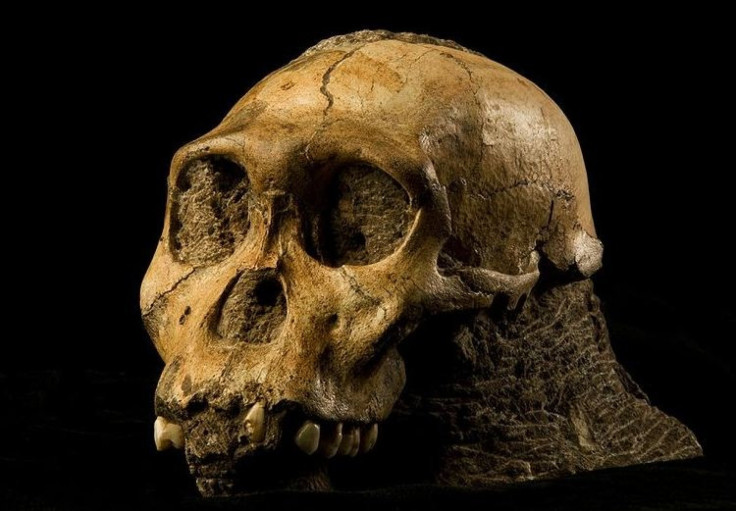New Hybrid Species of Ape and Man May Redefine Your Ancestry

Recently discovered fossil bones track human ancestry back to a creature with human-like hands and ape-like feet that roamed Africa two million years ago, according to scientists who made the discovery.
The new fossil species, after its partial skeletons were discovered in 2010, had its anatomy comprehensively analyzed for the first time in a series of papers published in the journal Science on Thursday.
To scientists' surprise and excitement, the fossils include well preserved bones of two skulls, a nearly complete right hand, a foot and a pelvis. Based on the rate of decay of uranium in the rock layer where the fossils were found, the southern ape known as Australopithecus sedibadates existed in a cave 1.977 million years ago.
A team of scientists and technicians led by Lee Burger, a palaeoanthropologist at the University of Witwatersrand in Johannesburg scanned and measured the fossils using a powerful x-ray scanner at the European Synchrotron Facility in Grenoble, France, concluding that it is an immediate ancestor of the ancient root of modern humans.
Until now, the earliest ancestor of took-making humans was known to be Homo habilis that lived 1.75 million years ago. But the new discovery points to Australopithecus sedibadates as our first direct ancestor.
The skeletons show an extraordinary mix of primitive, ape-like features like big body, long arms and tree-climbing skills, while also possessing traits of modern humans in the pelvis, hands, ankles and brain.
Mixed features were seen, for example, in the hand that has longer thumb than modern humans, wrist to handle large load, and long narrow fingers to grasp tools.
So this mix of morphology suggests to us that sediba likely still used its hands for climbing in trees... but it was likely also capable of making the precision grips that we believe are necessary for making stone tools, said co-author Tracy Kivell from the Max Planck Institute for Evolutionary Anthropology in Leipzig, Germany.
Its pelvis suggested an upright posture, and its foot and ankle showed combined features of both apes and humans.
What is remarkable about Australopithecus sediba is that, as a field, it is a discovery we never thought would be made: a bona fide transitional species, Burger told the Guardian.
It is a humbling experience. These are skeletons that you realize are going to be studied by humans for as long as humans study themselves. And that gives you some pause.
The interior of the skull had bumps and other contours, showing the imprint of a small brain in a transitional phase from a primitive structure to a more modern form. The brain suggests that the ape-like hominid species had the first kind of sophisticated mental abilities.
There are areas above and behind the eyes that are expanded and they are responsible for multitasking, reasoning and long-term planning. These are changes that mirror the differences that humans exhibit from chimpanzees, said Kristian Carlson who worked on the brain scans. The discovery challenges the previously held theory that our ancient ancestors grew large brains before they reorganized to resemble the modern human brain.
While not all scientists agree to the species' tie with the human ancestry, the fossils remain invaluable in the years of discovery and debate on human origins to come.
Just because it shares a bit of anatomical morphology with Homo does not mean it is Homo or ancestral to Homo, said anthropologist Bernard Wood at George Washington University, reports The Wall Street Journal. It looks increasingly that these bits of morphology are appearing more than once, independently, in the tree of life.
While discounting the claim by Burger and his team, Wood admitted that the fossils are certain to prompt years of scholarly debate.
No matter where this species is eventually put in the family tree, whether you agree with our idea that it's the best candidate ancestor of Homo erectus, or whether it is a species that mimicked the developmental processes that led to our genus, or whether it turned out to be an evolutionary dead end, these are some of the finest transitional fossils that have ever been discovered for any mammal species, and I don't say that lightly, said Burger.
Currently, the lack of resources in the skeletal characteristics of the Homo habilis makes the comparison with the sediba difficult.
© Copyright IBTimes 2024. All rights reserved.





















